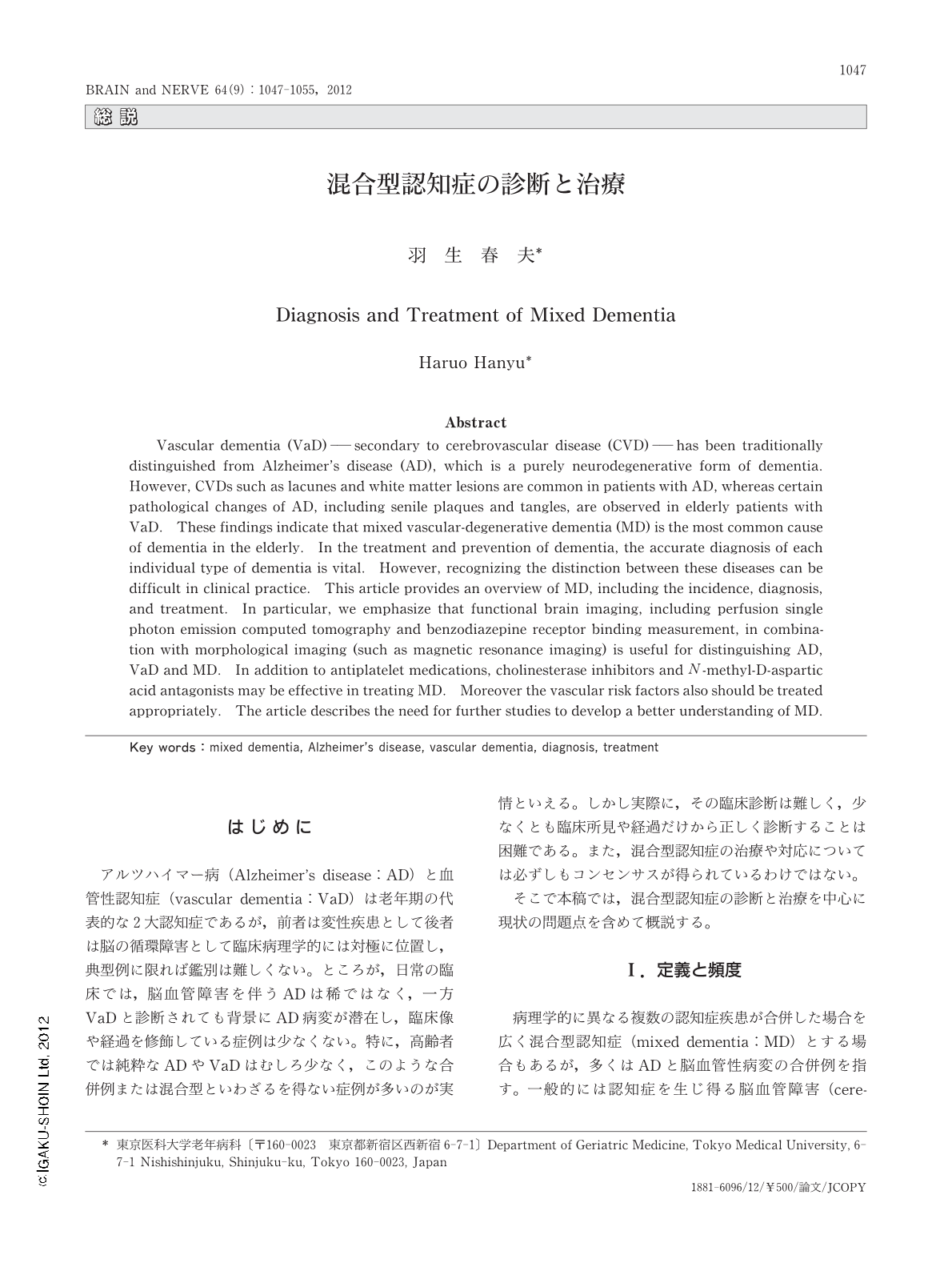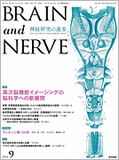Japanese
English
- 有料閲覧
- Abstract 文献概要
- 1ページ目 Look Inside
- 参考文献 Reference
- サイト内被引用 Cited by
はじめに
アルツハイマー病(Alzheimer's disease:AD)と血管性認知症(vascular dementia:VaD)は老年期の代表的な2大認知症であるが,前者は変性疾患として後者は脳の循環障害として臨床病理学的には対極に位置し,典型例に限れば鑑別は難しくない。ところが,日常の臨床では,脳血管障害を伴うADは稀ではなく,一方VaDと診断されても背景にAD病変が潜在し,臨床像や経過を修飾している症例は少なくない。特に,高齢者では純粋なADやVaDはむしろ少なく,このような合併例または混合型といわざるを得ない症例が多いのが実情といえる。しかし実際に,その臨床診断は難しく,少なくとも臨床所見や経過だけから正しく診断することは困難である。また,混合型認知症の治療や対応については必ずしもコンセンサスが得られているわけではない。
そこで本稿では,混合型認知症の診断と治療を中心に現状の問題点を含めて概説する。
Abstract
Vascular dementia (VaD)――secondary to cerebrovascular disease (CVD)――has been traditionally distinguished from Alzheimer's disease (AD), which is a purely neurodegenerative form of dementia. However, CVDs such as lacunes and white matter lesions are common in patients with AD, whereas certain pathological changes of AD, including senile plaques and tangles, are observed in elderly patients with VaD. These findings indicate that mixed vascular-degenerative dementia (MD) is the most common cause of dementia in the elderly. In the treatment and prevention of dementia, the accurate diagnosis of each individual type of dementia is vital. However, recognizing the distinction between these diseases can be difficult in clinical practice. This article provides an overview of MD, including the incidence, diagnosis, and treatment. In particular, we emphasize that functional brain imaging, including perfusion single photon emission computed tomography and benzodiazepine receptor binding measurement, in combination with morphological imaging (such as magnetic resonance imaging) is useful for distinguishing AD, VaD and MD. In addition to antiplatelet medications, cholinesterase inhibitors and N-methyl-D-aspartic acid antagonists may be effective in treating MD. Moreover the vascular risk factors also should be treated appropriately. The article describes the need for further studies to develop a better understanding of MD.

Copyright © 2012, Igaku-Shoin Ltd. All rights reserved.


